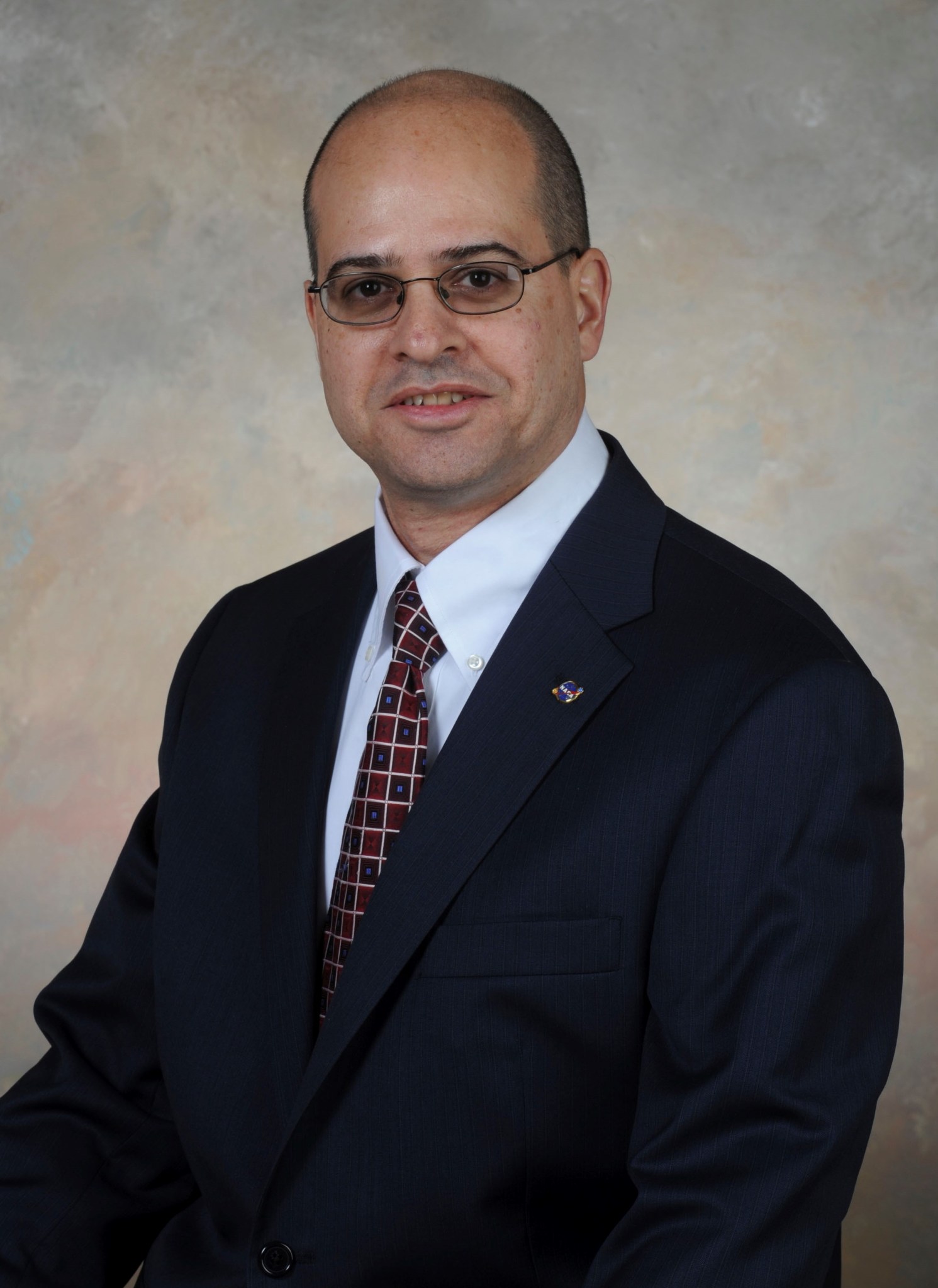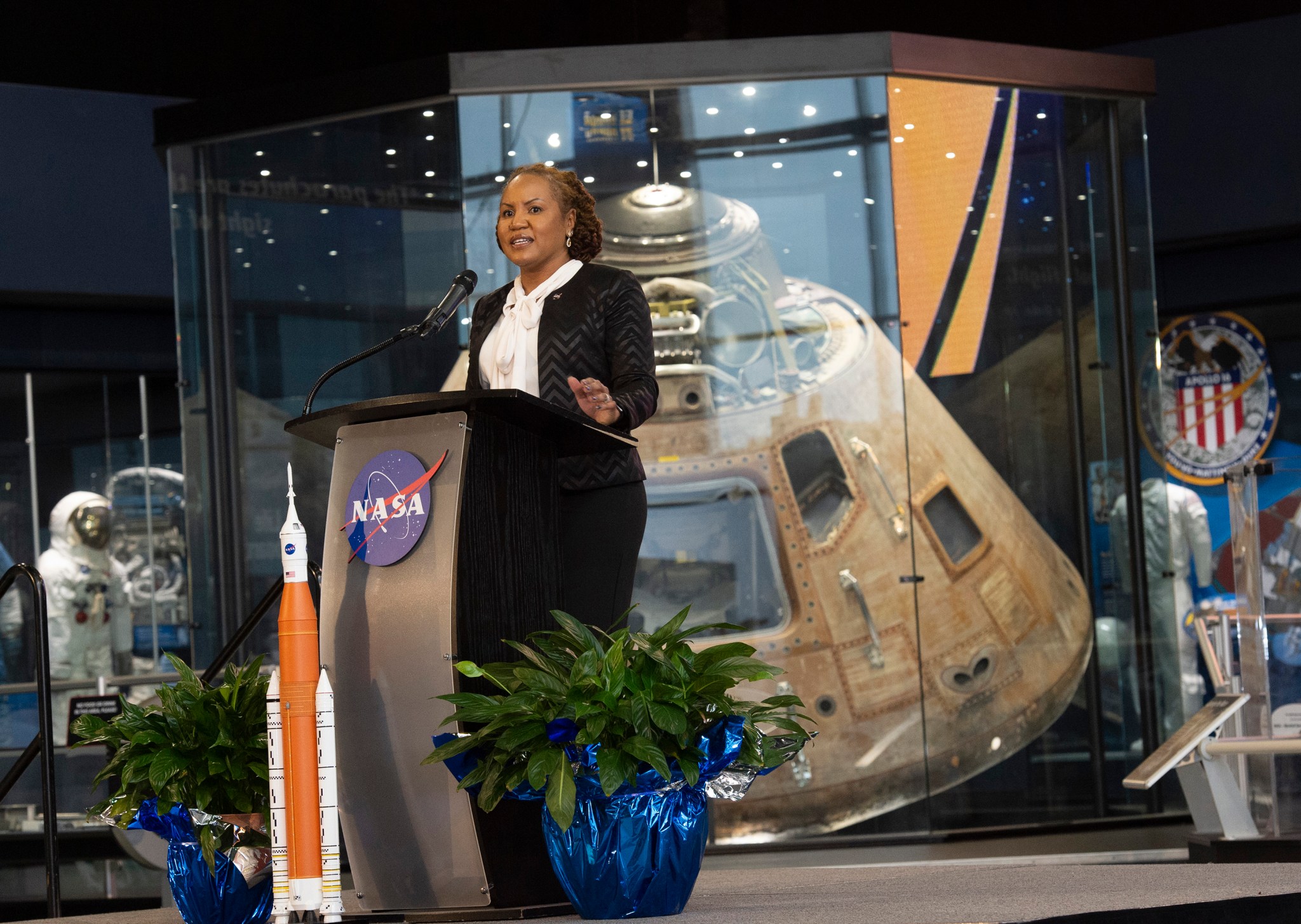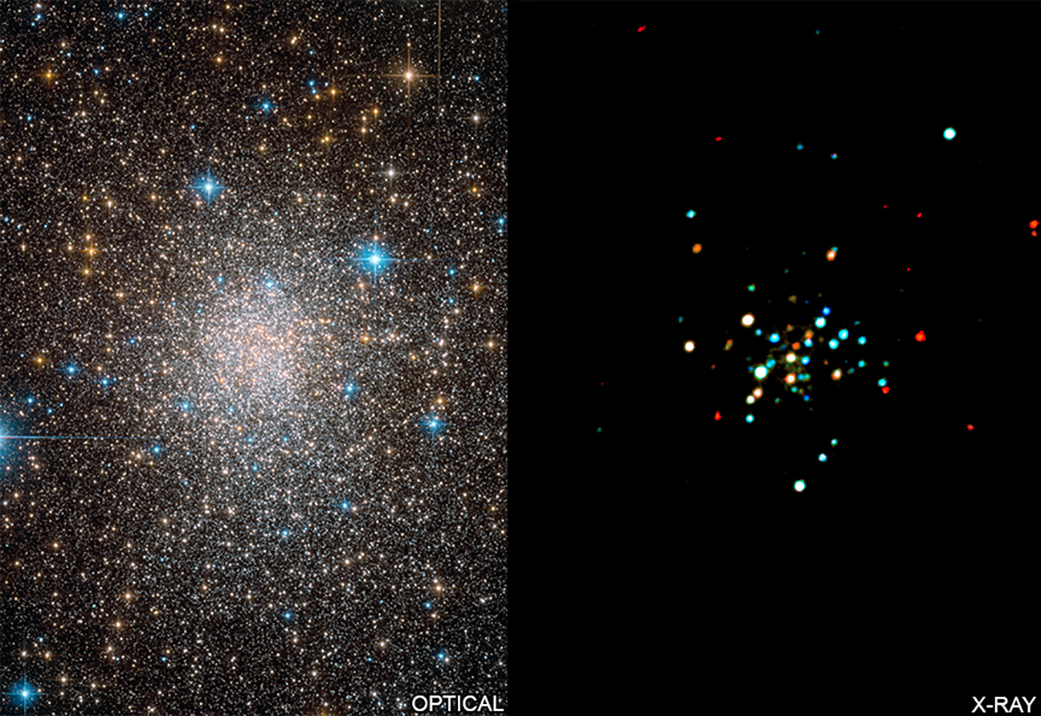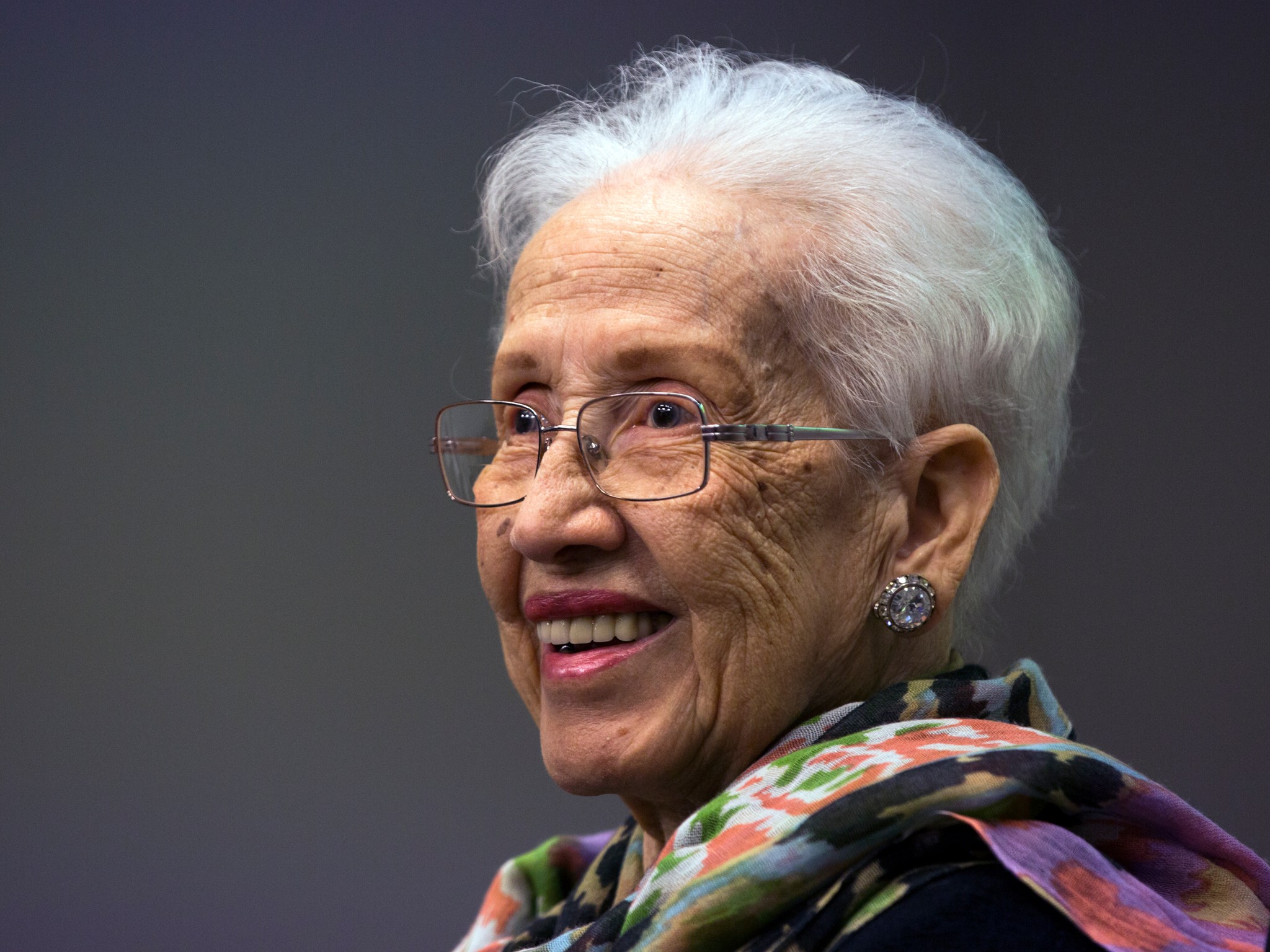In This Week’s Star
- Mike Fazah Named Deputy Director of Marshall’s Propulsion Systems Department
- NASA Introduces Mission Support Updates at Marshall Small Business Meeting
- Marshall Celebrates Contributions by Workforce Alums of Historically Black Colleges, Universities
- Panel Features NASA Leadership, 3D-Printed Habitat Winners
- Chandra Helps Discover Cosmic Jekyll and Hyde
- Remembering Katherine Johnson
- Juno’s Jupiter Water Investigation, Rover Challenge Teams Highlighted on ‘This Week @NASA’
- This Week in NASA History: First Flight of Saturn IB – Feb. 26, 1966
Mike Fazah Named Deputy Director of Marshall’s Propulsion Systems Department
Mike Fazah has been appointed deputy director of the Propulsion Systems Department in the Engineering Directorate at NASA’s Marshall Space Flight Center.
Working with newly appointed department director Thomas Brown, Fazah will oversee the organization’s role in planning, directing and executing technology maturation, advanced design, development and testing of propulsion systems and components for NASA’s space transportation systems. They will manage a workforce of nearly 350 civil servants and contractors and a budget of almost $57 million, supervising delivery of integrated propulsion products and engineering services to NASA, other government agencies and the commercial propulsion development community.
Fazah, who has worked at NASA for more than 30 years, assumed the Senior Executive Service position after serving as senior technical assistant to Preston Jones, Marshall Associate Director, Technical. In that role he led special studies and provided technical guidance and technology strategy recommendations to senior Marshall and NASA leadership.
The Senior Executive Service is the personnel system covering top managerial positions in federal agencies.
Fazah managed Marshall’s Systems Engineering & Integration Division from 2013-2019. He also was detailed in 2017-2018 to the Commercial Crew Program Launch Vehicle System Office, where he was deputy manager, leading certification of the SpaceX Falcon 9 and United Launch Alliance Atlas V rockets for crewed flight.
In 2016, he took a rotational assignment at NASA Headquarters, as deputy enterprise integration manager for the Exploration Systems Division of NASA’s Human Exploration and Operations Mission Directorate. He supported integration of the Space Launch System, Orion crew vehicle and Artemis I mission ground systems. Since joining NASA in 1998 as a reliability engineer, Fazah has led multiple divisions within Marshall’s Propulsion Systems Department, Spacecraft & Vehicle Systems Department and Space Systems Department.
A native of New York, he received an undergraduate degree in aerospace engineering in 1988 from Polytechnic University — now New York University’s Tandon School of Engineering — in Brooklyn, and a master’s degree in mechanical engineering in 1994 from the University of Alabama in Huntsville. During his NASA career, he has earned numerous awards and certificates of appreciation, including a NASA Outstanding Leadership Medal in 2011.
Fazah and his wife, Angela, live in Huntsville. They have two adult children.
NASA Introduces Mission Support Updates at Marshall Small Business Meeting
By Janet Sudnik
As NASA prepares to send astronauts to explore the Moon and Mars, working hand-in-hand with mission support contracts will be essential. At NASA’s Marshall Space Flight Center, a strong, skilled workforce of contractors and small businesses has always worked in tandem with the agency to push the bounds of exploration. At Marshall’s 29th Small Business Alliance Meeting on Feb. 20, nearly 900 industry leaders from 33 states gathered to learn about a new contracting operating model.
“NASA relies heavily on a wide range of expert support and services from its contract partners to achieve mission success, from spaceflight to day-to-day operations,” said Monica Manning, assistant administrator of NASA’s Office of Procurement, who introduced the new model at the event. “It is our hope that this new framework will improve our processes and relationships, and create even more opportunities for partnership.”
Held at the U.S. Space & Rocket Center’s Davidson Center for Space Exploration, the event featured leadership from NASA Headquarters and Marshall, who presented the new model, which better aligns the people, processes, procurements and policies of mission support. These services are traditionally managed and operated at each NASA center, and include functions such as financial management, human resources, information technology, communications, education, procurement, general counsel and many others.
“Huntsville has long had a well-respected small business and contract community, and a decades-long history of successful partnerships with NASA and other government agencies,” said David Brock, a Marshall small business specialist. “These improvements will help organize and simplify how we work with our industry base.”
The agency’s Office of Procurement has organized its buying locations to become more effective and efficient. Services will be managed locally, regionally or centrally at one or more of the NASA buying offices located at NASA field centers, allowing them to share resources and to lower operating costs. This modernized approach will create new prime and subcontracting procurement opportunities for small businesses.
Sudnik is a public affairs officer in the Office of Strategic Analysis & Communications.
Marshall Celebrates Contributions by Workforce Alums of Historically Black Colleges, Universities
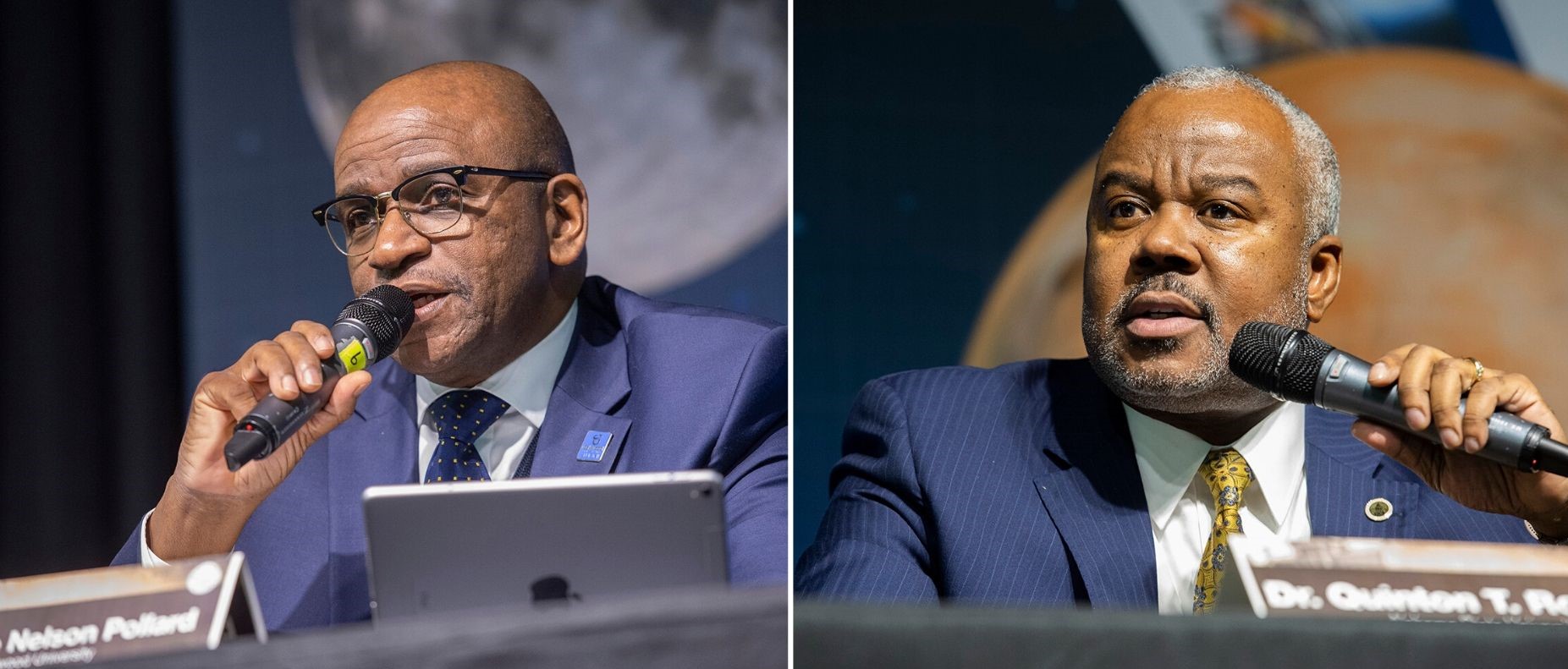
Leslie Pollard, left, president of Oakwood University in Huntsville, and Quinton Ross, president of Alabama State University in Montgomery, participate in a panel discussion promoting education and careers in the STEM fields — science, technology, engineering and mathematics — among historically black colleges and universities, Feb. 18 at NASA’s Marshall Space Flight Center. Both HBCU schools maintain strong working ties with NASA and Marshall’s science, engineering and spaceflight missions. The panel was part of Marshall’s Black History Month events. “Visibility and representation matter,” said Marshall Associate Director Steve Miley, addressing assembled team members and guests. “We understand and value what diversity, inclusion and equality bring, not just to our agency, but to our mission … and we continue to strive to create a work environment where everyone can thrive.” The Marching Maroon & White band of Alabama A&M University in Huntsville and Oakwood University Aeolians Choir also performed. (NASA/Emmett Given)
Panel Features NASA Leadership, 3D-Printed Habitat Winners
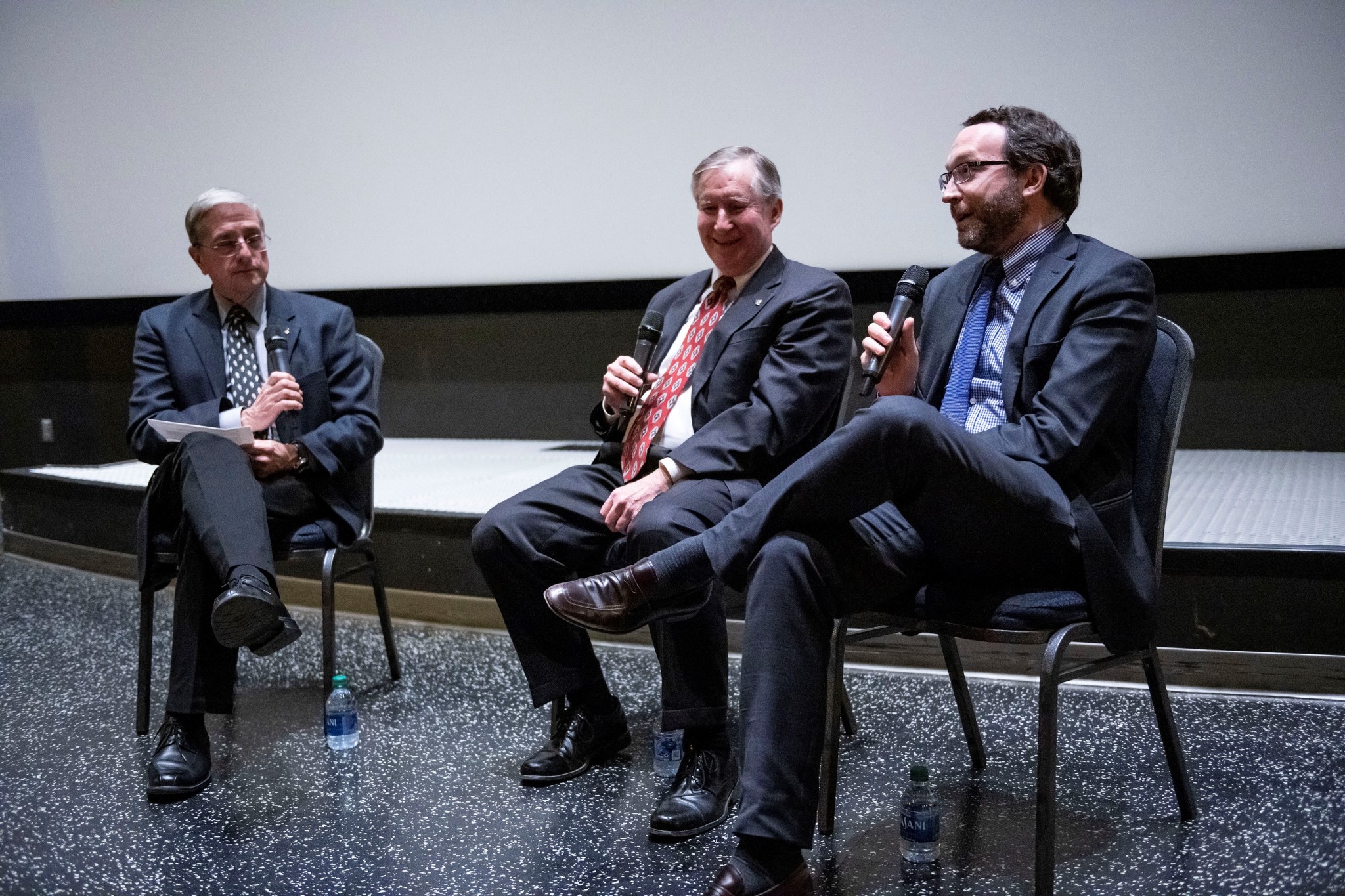
Former NASA astronaut Donald Thomas, left, moderates a Q&A with Raymond “Corky” Clinton, center, associate director, technical, of NASA’s Marshall Space Flight Center’s Science and Technology Office, and Alexander MacDonald, NASA chief economist, on Feb. 19 at the U.S. Space & Rocket Center. The Q&A was part of a Pass the Torch lecture that featured experts from NASA, industry and academia. Winners from the recently completed 3D-Printed Habitat Challenge shared how the challenge impacted their lives and advanced the state of technology in additive construction. The 3D-Printed Habitat Challenge was a NASA’s Centennial Challenges competition to build a 3D-printed habitats for deep space exploration, including the agency’s journey to the Moon, Mars and beyond. (NASA/Fred Deaton)
Chandra Helps Discover Cosmic Jekyll and Hyde
A double-star system has been flipping between two alter egos, according to observations with NASA’s Chandra X-ray Observatory and the National Science Foundation’s Karl F. Jansky Very Large Array. Using nearly a decade and a half’s worth of Chandra data, researchers noticed a rare example of a stellar duo that behaved like one type of object before switching its identity, and then returning to its original state after a few years.
Astronomers found this volatile binary system in a dense collection of stars, the globular cluster Terzan 5, which is located about 20,000 light-years from Earth in the Milky Way galaxy. This stellar duo, known as Terzan 5 CX1, has a neutron star — the extremely dense remnant left behind by a supernova explosion — in close orbit around a star similar to the Sun, but with less mass.
In binary systems like Terzan 5 CX1, the heavier neutron star pulls material from the lower-mass companion into a surrounding disk. Astronomers can detect these so-called accretion disks by their bright X-ray light, and refer to these objects as “low-mass X-ray binaries.”
Spinning material in the disk falls onto the surface of the neutron star, increasing its rotation rate. The neutron star can spin faster and faster until the roughly 10-mile-wide sphere, packed with more mass than the Sun, is rotating hundreds of times per second. Eventually, the transfer of matter slows down and the remaining material is swept away by the whirling magnetic field of the neutron star, which becomes a millisecond pulsar. Astronomers detect pulses of radio waves from these millisecond pulsars as the neutron star’s beam of radio emission sweeps over Earth during each rotation.
While scientists expect the complete evolution of a low-mass X-ray binary into a millisecond pulsar should happen over several billion years, there is a period of time when the system can switch rapidly between these two states. Chandra observations of Terzan 5 CX1 show that it was acting like a low-mass X-ray binary in 2003, because it was brighter in X-rays than any of the dozens of other sources in the globular cluster. This was a sign that the neutron star was likely accumulating matter.
In Chandra data taken from 2009 to 2014, Terzan 5 CX1 had become about 10 times fainter in X-rays. Astronomers also detected it as a radio source with the Karl F. Jansky Very Large Array in 2012 and 2014. The amount of radio and X-ray emission and the corresponding spectra — the amount of emission at different wavelengths — agree with expectations for a millisecond pulsar. Although the radio data used did not allow a search for millisecond pulses, these results imply that Terzan 5 CX1 underwent a transformation into behaving like a millisecond pulsar and was blowing material outward. By the time Chandra had observed Terzan 5 CX1 again in 2016, it had become brighter in X-rays and changed back to acting like a low-mass X-ray binary again.
To confirm this pattern of “Jekyll and Hyde” behavior, astronomers need to detect radio pulses while Terzan 5 CX1 is faint in X-rays. More radio and X-ray observations are planned to search for this behavior, along with sensitive searches for pulses in existing data. Only three confirmed examples of these identity-changing systems are known, with the first discovered in 2013 using Chandra and several other X-ray and radio telescopes.
Arash Bahramian, of the International Center for Radio Astronomy Research. in Australia, led the study of the Jekyll and Hyde binary. Findings were published in the Sept. 1, 2018 issue of The Astrophysical Journal.
NASA’s Marshall Space Flight Center manages the Chandra program. The Smithsonian Astrophysical Observatory’s Chandra X-ray Center controls science and flight operations from Cambridge and Burlington, Massachusetts.
Read the full story here.
Remembering Katherine Johnson
Nationwide, NASA honored the monumental impact of trailblazer Katherine Johnson, who died Feb. 24 at age 101.
“Katherine Johnson is one of the most recognized ‘human computers’ in history and was instrumental in America’s first human spaceflight mission,” said Jody Singer, director of NASA’s Marshall Space Flight Center. “We are saddened by her passing and appreciative of her accomplishments that pioneered a path for African American women in her field. May her legacy and love of science, technology, engineering and math inspire the Artemis Generation.”
In 1962, as NASA prepared for the orbital mission of astronaut John Glenn, Johnson was called upon to do the work that she would become most known for.
The complexity of Glenn’s orbital flight had required the construction of a worldwide communications network, linking tracking stations around the world to computers across the United States. The computers had been programmed with the orbital equations that would control the trajectory of the capsule in Glenn’s Friendship 7 mission, but the astronaut was wary of putting his life in the care of the electronic calculating machines — which were prone to hiccups and blackouts.
As a part of the preflight checklist, Glenn asked engineers to “get the girl” – Johnson — to run the same numbers through the same equations that had been programmed into the computer, but by hand, on her desktop mechanical calculating machine. “If she says they’re good,” Johnson remembers the astronaut saying, “then I’m ready to go.” Glenn’s flight was a success, and marked a turning point in the competition between the United States and the Soviet Union in space.
“At NASA we will never forget her courage and leadership and milestones we could not have reached without her,” NASA Administrator Jim Bridenstine said. “We will continue building on her legacy and work tirelessly to increase opportunities for everyone who has something to contribute toward the ongoing work of raising the bar of human potential.”
By age 13, Johnson was attending high school on the campus of historically black West Virginia State College. At 18, she enrolled in the college itself, graduated with highest honors in 1937 and took a job teaching at a black public school in Virginia.
In 1953, Johnson began working in the all-black West Area Computing section at the National Advisory Committee for Aeronautics’ Langley laboratory in Hampton, Virginia. Just two weeks into her tenure in the office, she was assigned to a project in the Maneuver Loads Branch of the Flight Research Division, and Johnson’s temporary position soon became permanent.
In 1957, Johnson provided some of the math for the 1958 document Notes on Space Technology, a series of lectures given by engineers in the Flight Research Division and the Pilotless Aircraft Research Division. Engineers from those groups formed the core of the Space Task Group — NACA’s first official foray into space travel. Johnson, who had worked with many of those engineers since coming to Langley, joined them as NACA became NASA later that year. She did trajectory analysis for Alan Shepard’s May 1961 mission Freedom 7, America’s first human spaceflight.
In 1960, she and engineer Ted Skopinski co-authored Determination of Azimuth Angle at Burnout for Placing a Satellite Over a Selected Earth Position — a report laying out the equations describing an orbital spaceflight in which the landing position of the spacecraft is specified. It was the first time a woman in the Flight Research Division had received credit as an author of a research report.
Johnson retired in 1986 after 33 years at Langley. In 2015, President Barack Obama awarded her the Presidential Medal of Freedom, America’s highest civilian honor.
“She was an American hero and her pioneering legacy will never be forgotten,” said NASA Administrator Jim Bridenstine. Credits: NASA
Juno’s Jupiter Water Investigation, Rover Challenge Teams Highlighted on ‘This Week @NASA’
NASA’s Juno mission’s water investigation of Jupiter and the announcement of the 2020 Human Exploration Rover Challenge teams are featured in “This Week @NASA,” a weekly video program broadcast on NASA-TV and posted online.
The first science results from the Juno mission’s investigation into the amount of water in Jupiter’s atmosphere estimate that, at the equator, water makes up about 0.25% of the molecules — almost three times that of the Sun. These are also the first findings on Jupiter’s abundance of water since NASA’s 1995 Galileo mission suggested Jupiter might be extremely dry compared to the Sun — a suggestion based not on liquid water but on the presence of water’s molecular components in the Sun. Juno is part of the Science Mission Directorate’s New Frontiers Program, managed by NASA’s Marshall Space Flight Center.
Last week, NASA announced that more than 100 teams from around the world are expected to participate in the agency’s Human Exploration Rover Challenge, set for April 17-18 at the U.S. Space & Rocket Center. The annual event features student-built, human-powered rovers navigating a course simulating terrain found on the Moon and Mars, as well as other planets, moons and asteroids. Marshall’s Office of STEM Engagement manages the challenge for NASA.
View this and previous episodes at “This Week @NASA” on NASA’s YouTube page.
This Week in NASA History: First Flight of Saturn IB – Feb. 26, 1966
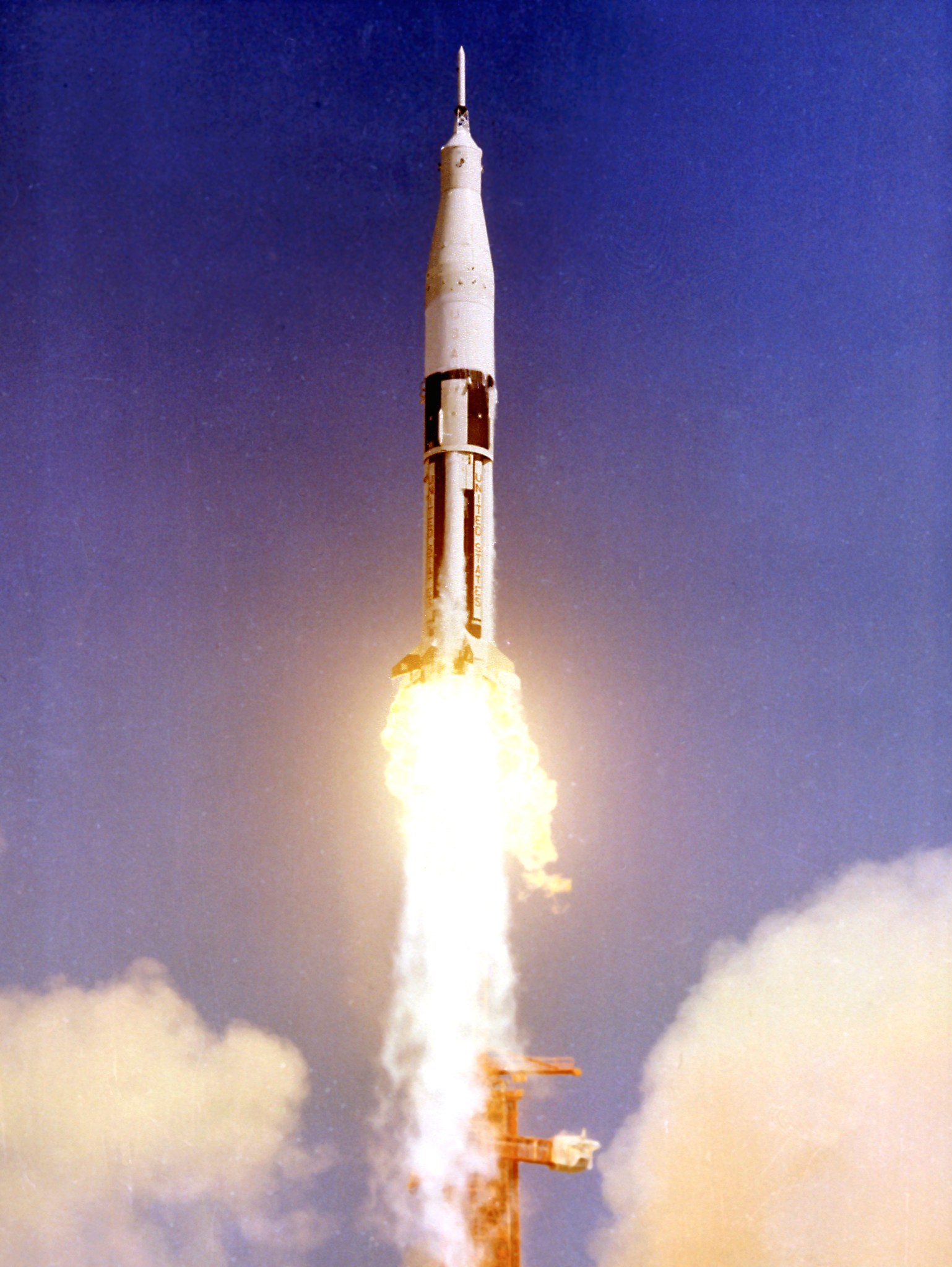
This week in 1966, AS-201, the first Saturn IB rocket, lifted off from NASA’s Kennedy Space Center. Designed and developed by NASA’s Marshall Space Flight Center, the AS-201 mission was an uncrewed suborbital flight to test the Saturn IB and the Apollo Command and Service modules. The objectives of the flight were to verify the structural integrity, launch loads, stage separation and operation of subsystems of the Saturn 1B, and evaluate the Apollo spacecraft subsystems, heatshield and mission support facilities. The NASA History Program is responsible for generating, disseminating and preserving NASA’s remarkable history and providing a comprehensive understanding of the institutional, cultural, social, political, economic, technological and scientific aspects of NASA’s activities in aeronautics and space. For more pictures like this one and to connect to NASA’s history, visit the Marshall History Program’s webpage. (NASA)


























